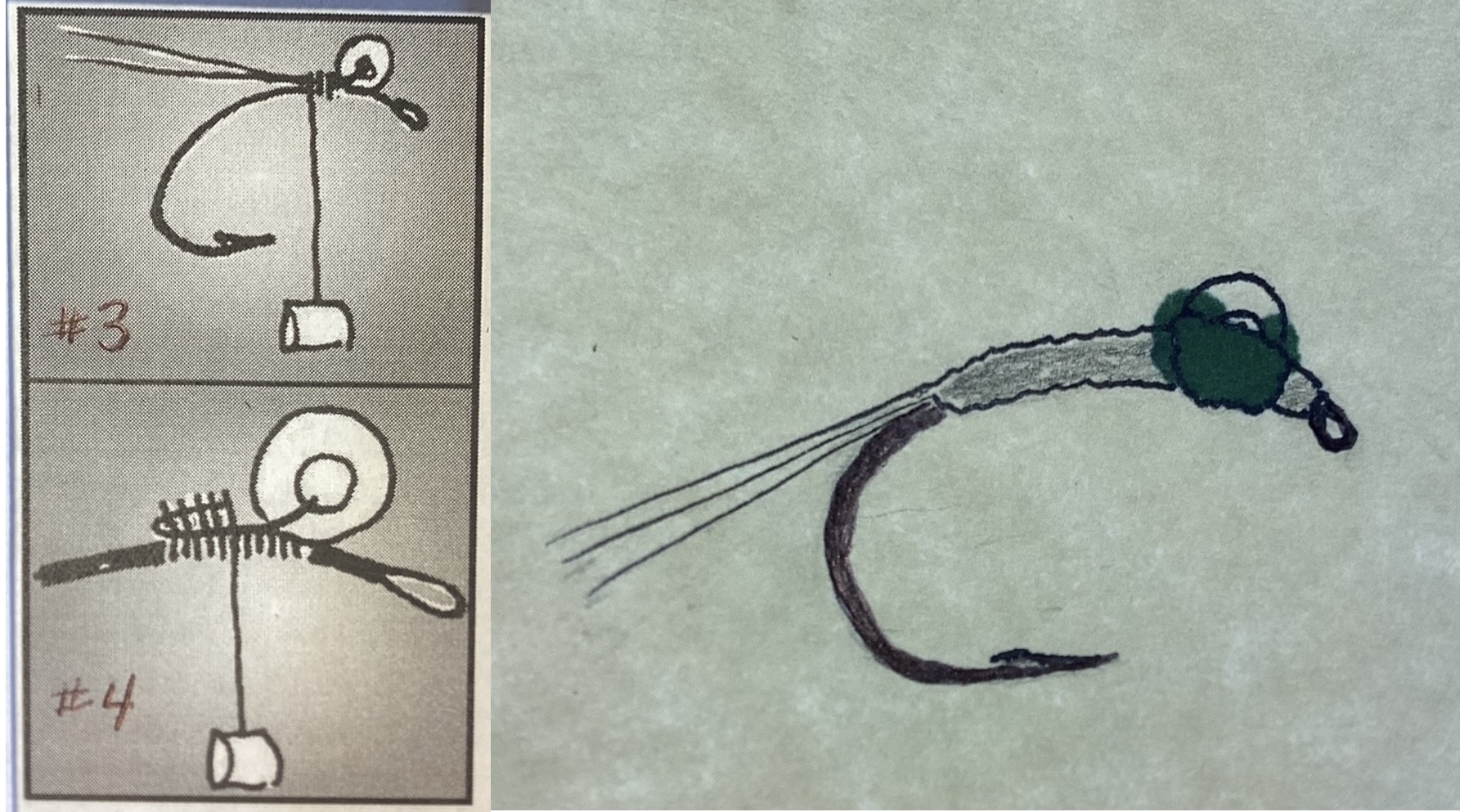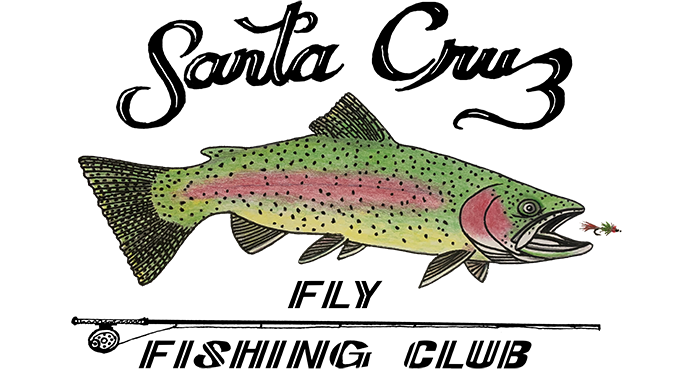
This fly imitates a midge sending to the surface. The air bubble (bead) is making the ascension possible. Midges hatch throughout the year and most still waters and moving waters. It’s best finished using an indicator. Take this fly, and the October caddis that will be taught at the flytying class to the upper Sacramento and McLeod rivers in late October to mid November.
Hook: Size 16-24 (TMC, TFS 2487).
Thread: black 8/0
Bubble: One petite or extra small, clear glass bead plus 5X tippet.
Tail: dark rust, stiff bird, hackle
Thorax: Dark olive, super find dubbing.
Head: Black thread
1. Crimp barb. NOTE: end of shank is above barb
2. Attach thread 2/5 back on shank with about six wraps. Leave bobbin hanging at rear of wraps.
3. Slip bead onto tippet and position in the center. Fold backward and hold strands together. Place on hook shank, bead forward of eye, tippet to rear, make several thread wraps. Pull on tippet to move bed into position. Makes several snug thread wraps 1/8 inch to rear.
4. Bend tippet toward eye and snuggly tie down up to behind bead. Cut excess.
5. Cut about 12 barbs off stem of hackle keeping tips aligned. Lay on top of shank, tips extending about two hook lengths to rear of shank. Secure to shank behind bed with wraps to mid shank. Pull on barb butts positioning tips so they are hook shank length beyond shank. Attached to shank with touching wraps back to slightly beyond end of hook shank. Cut excess hackle butts behind bed.
6. Wrap thread forward, forming slender tapered body up to bead.
7. Wrap a small thorax, two wraps behind bead, one in front, two around base of bead.
8. Wrap a small thread head, whip finish, cut thread.
Posted on September 5th, 2023
